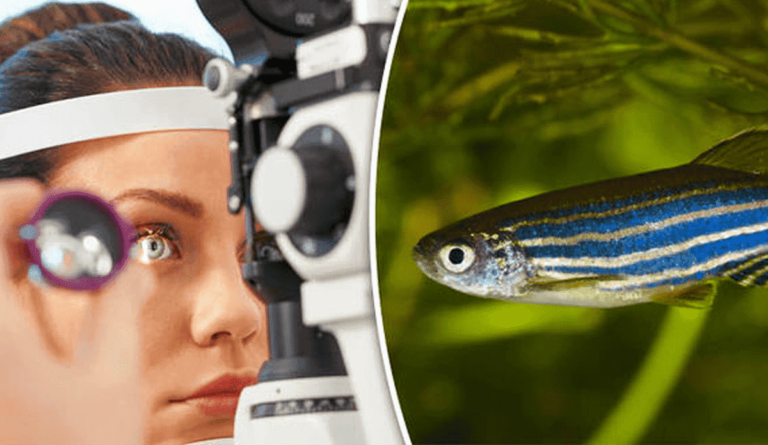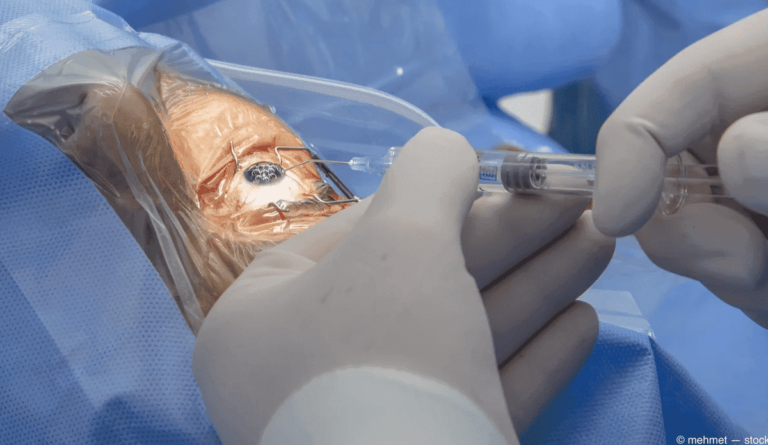Telling your doctor about small changes right away can help you get treatment to avoid further impairment.
By Quinn Phillips
Medically Reviewed by Sanjai Sinha, MD
Reviewed: April 21, 2021
When you have wet age-related macular degeneration (AMD), the growth of abnormal blood vessels under the macula and retina of your eye can lead to distortions and black spots in your vision.
In some people, this visual impairment remains stable for long periods of time. But the nature of wet AMD is such that even if your vision hasn’t changed in a while, that doesn’t mean it’ll continue to stay stable.
It’s not always possible to recover lost vision caused by scarring or other forms of permanent damage. But a recent change or loss in vision is often due to a surge in blood vessel growth that’s still under way, which means it can be reversed.
The sooner you let your doctor know about any changes in your vision, the sooner you can be evaluated and receive appropriate treatment to preserve your vision.
One thing that helps is tracking your vision. Certain visual changes probably won’t be noticeable in your day-to-day life right away, but there are quick and easy tests designed to track these changes.
Your doctor may recommend a particular visual test and method to track your results, or you may be told about ways to keep tabs on your vision.
Using an Amsler Grid
The most commonly recommended method for testing your vision at home is an Amsler grid.
This image-based tool consists of black lines on a white background that form a grid of squares, with a single black dot where the two center lines intersect.
“A paper Amsler grid is what we usually give to patients to use for monitoring central vision,” says Susanna Soon-Chun Park, MD, PhD, an ophthalmologist and vitreoretinal specialist at the University of California, Davis in Sacramento. “Patients can also use lines made by tiles on the floor, or vertical or horizontal blinds if they are traveling and don’t have an Amsler grid available. The most important thing is to test one eye at a time and look for any new distortion or breaks in the line when looking at the central dot.”
There are also electronic versions of Amsler grids, notes Dr. Park, that are readily accessible in apps or by doing an internet search.
Most people tend to find printed Amsler grids easiest to use, according to Cecilia S. Lee, MD, an associate professor and director of clinical research in the department of ophthalmology at the University of Washington Medical Center in Seattle.
“They usually put it on their fridge, and whenever they walk by, they can test it,” says Dr. Lee. “I know there are dozens of apps you could use, though, so whichever way is easier” is likely to be the best choice for you.
When using any form of Amsler grid, Lee’s advice echoes Park’s: You should cover one eye at a time and look at the center of the grid. “If there’s a part that’s missing or if a straight line looks bent or wavy, then that’s a new symptom.”
This applies only to changes in what you notice. “We’re not interested in what has always been there,” says Lee. “We’re interested in picking up new symptoms.”
Using Preferential Hyperacuity Perimeter (PHP)
Preferential hyperacuity perimeter (PHP), another method of regular testing, uses an electronic device that looks a bit like a pair of binoculars on a stand.
For each eye that is undergoing testing, you’re shown a series of patterns involving dots that are mostly lined up perfectly straight, but with a few out of place to form a “wave” or “bump.”
Once the image has flashed, you mark the spot on the screen where the pattern was disrupted (usually by clicking with a mouse).
If your own vision is disrupted, more than one area of the image — or just the wrong area of the image — may appear to have a break in the pattern.
An advantage of this method is that results are saved electronically, and your doctor can be automatically alerted if your answers change.
A disadvantage to PHP is that it’s much more expensive than an Amsler grid and probably more time consuming — and might not offer any significant advantages.
“The PHP may be more sensitive and pick up more subtle changes versus the Amsler grid, but more research needs to be done to understand how those abnormalities translate to treatment,” Lee says.
How Often Should You Test?
People who have wet AMD should ideally track their vision daily, says Park. “Any sudden change in the Amsler grid should warrant a prompt eye examination. If diagnosis of wet AMD is made early and treatment provided, vision loss can be minimized and sometimes reversed.”
Lee also recommends daily tracking and notes, “It literally takes less than a second once you know how to do it.”
But even if you can’t or won’t test your vision daily, “It needs to be on a regular basis so that you know what your normal is,” says Lee. That’s because scar tissue can cause vision impairment that isn’t the result of active disease.
It’s important, Lee says, to have a good sense of what your baseline vision loss looks like so you can quickly recognize any new or worsening problems.
Tracking and Sharing Results
For many people who have wet AMD, it can be helpful to keep a vision log to sort out which symptoms are ongoing and stable, which ones may be a temporary fluke, and which are new and potentially troubling.
Logging your symptoms can take any form that’s convenient for you, whether that’s a paper notebook, notes on your phone, or an app designed to track vision symptoms.
It’s possible that in testing your vision, you’ll experience a problem that’s worth noting but doesn’t warrant a call to your doctor.
“If you wake up and do the Amsler grid and things looks really blurry, but then it gets better in an hour or so or with artificial tears, then it’s probably related to a surface issue or dry eyes,” says Lee. In this case, you can simply make a note for your next appointment.
But if a problem doesn’t clear up, you should call your doctor. “A sudden change in central vision could be a sign of worsening AMD that requires prompt treatment,” says Park. “We currently have four different drugs we can inject into the eye to minimize vision loss. These drugs work best when wet AMD is treated early.”
You don’t need to make an emergency call or visit an urgent care clinic, says Lee. Just make a regular appointment with your eye doctor as soon as possible. “I usually try to see the patient within the same week,” she notes.
Remember that your doctor is there to help you and would rather see you for an issue that turns out to be nothing than have a serious problem go untreated.
“The earlier we treat vision issues, especially when the second eye is involved, the better the outcome,” says Lee. “We have a better chance of keeping good vision in that eye.”






